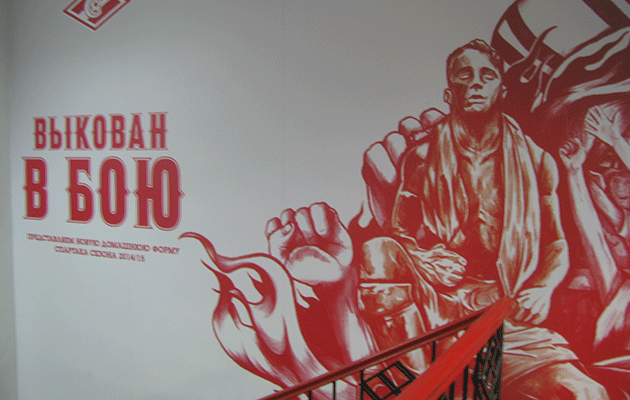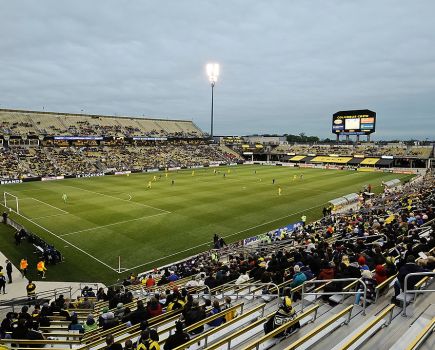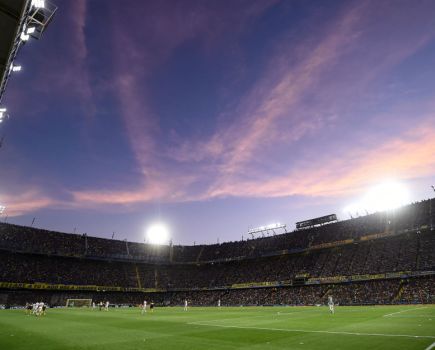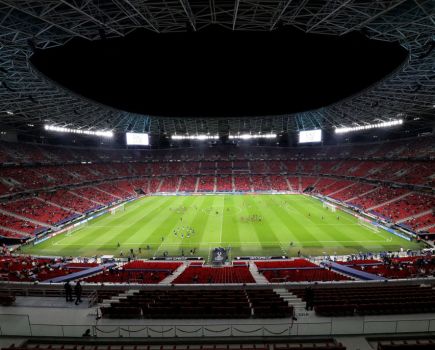Moscow is one of 125 soccer cities featured in Libero, the digital travel guide for football fans. Regularly refreshed with new destinations and the travelogue Soccer Sagas, Libero is a one-click treasure trove of football trip tips, tales and trivia. See www.liberoguide.com/moscow.
Otkrytiye Arena, Moscow Spartak v Lokomotiv, Sunday Oct 18/1330 local time
Spartak Moscow were for a long time the biggest and strongest side in the Russian domestic game.
Spartak’s fan base stretches far beyond Moscow, thanks to loyalties dating back to Soviet times when the club’s connections with the trades union movement earned a reputation as the people’s team, up against the military of CSKA, the secret police of Dynamo and assorted factory teams.
For most of this illustrious history, Spartak have been homeless. In recent times, they took up a tenancy at the national stadium of the Luzhniki, but that all changed when Sepp Blatter opened his envelope and announced that Russia would host the 2018 World Cup. Suddenly the plans for a Spartak stadium on the old Tishino Aerodrome site, proposals that had lain neglected for years, were dusted down as a matter of urgency.
Less than four years later, Spartak hosted Red Star Belgrade in a friendly to inaugurate their new home and in September 2014, the Red-and-Whites eased past Torpedo in the first competitive fixture at the Otkrytiye Arena.
Now Spartak are looking to recapture the glory days.
Above the main entrance, imaginatively displayed within a vintage TV set, is a striking black-and-white image of a classic Spartak line-up, a broad white band proudly spread over players’ chests. For almost the entire post-Stalin era, presiding over them was the remarkable figure of Nikolai Starostin.

The eldest of four footballing brothers, Starostin was a member of the Moscow Sport Circle formed shortly after the Revolution. He arranged for this burgeoning club to gain sponsorship from the food workers’ union. With Starostin as the driving force on and off the pitch, and his three brothers in the team, this club became Spartak shortly before the formation of the Soviet league in 1936.
Wresting the title the following year from Dynamo, headed by Secret Police chief Lavrenty Beria, Starostin’s Spartak instigated a bitter rivalry that saw he and his brothers sent to the notorious Lubyanka prison, then into exile in Siberia.
After Stalin’s death, Starostin moved back to his beloved Spartak as president. Now openly revered as the people’s team, with players such as Igor Netto, Spartak began winning silverware again. In 1977, still president, Starostin brought in Konstantin Beskov as coach and instigated a new era at the club.
Beskov brought in players such as goalkeeper Rinat Dasayev, and defender and captain Oleg Romantsev. Winning the title in 1979, Romantsev later followed wily old Starostin’s advice to become a coach.
With goals from Sergei Rodionov and Valery Schmarov, Romantsev immediately led Spartak to the title in 1989. Then, backed by Gazprom, the club dominated the domestic game in the post-Communist era, winning every title but one in ten years. With midfielders Andrei Tikhonov and Yegor Titov, Spartak made impressive runs in Europe, including three semi-final appearances – but the sales of Viktor Onopko and Valery Karpin did the club few favours on the pitch.
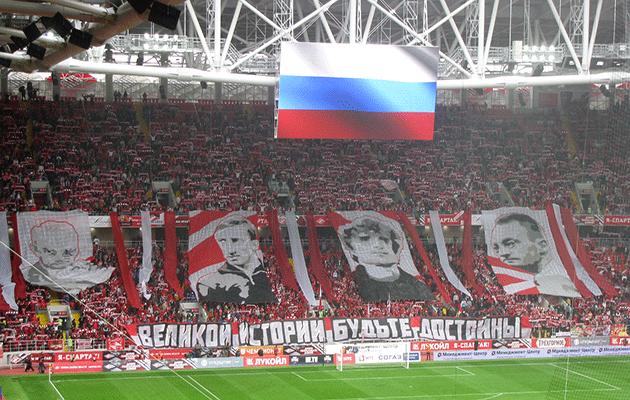
As for the stadium, since opening this 44,000-seater venue, the club has struggled to fill it. Owner Leonid Fedun even claimed that kick-off times are being deliberately chosen to make it hard for fans to attend the games. Other criticisms include the arrangements for VIP facilities – rather than set up a tier running all round the stadium, the executive facilities take up the whole of one side, which can put a dampener on the atmosphere.

Another snag is that the ground is in the middle of nowhere, served by a single, crowded metro line.
That said, the new stadium something of a new departure for Russian football – a purpose-built, large arena that meets the current requirements of top-level sport. Sightlines are good and the concourse areas are more attractive than most. And, unlike most of the other proposed 2018 venues – and the much-delayed new stadiums for Dynamo and CSKA in Moscow – it is at least open for business and hosting games of football.
The stadium is composed of four stands. Home north end B and south end D are behind the goals, C is along one sideline and, opposite, the main A stand is for press and VIPs. Only press and VIPs, in fact, a much-criticised measure.
On the ground
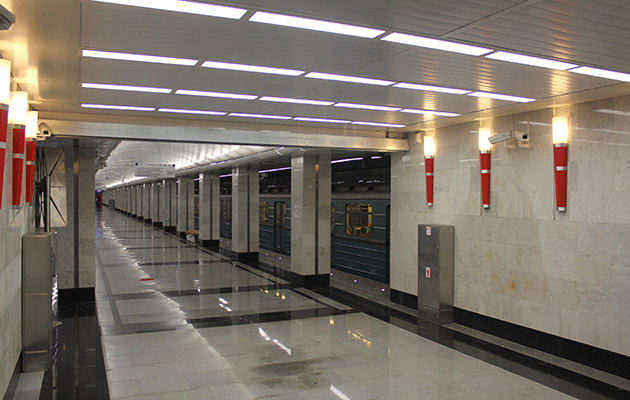
The Otkrytiye Arena is served by a single, purpose-built and suitably decorated metro station, Spartak. It’s on one of the most crowded lines in the city. With no attractions to slow the crowd’s mass departure after the game, not even an accessible club shop, there’s an uncomfortable surge of people squeezing into metro trains after the final whistle.
The station is on purple line 7, six stops from Krasnopresnenskaya, a hub on the circle line.

Tickets are first sold online to members, then to the general public, before being made available over the counter five days before the match.
If you’d rather not trek all the way to the outlet (daily 11am-8pm) at the stadium, then the club also distributes through the Fratriy shop at Krasnoprudnaya ulitsa 7-9 near Komsomolskaya metro.
You can also try at the club store listed below.
Behind the goals (B and D), prices are set at 700r, rising to 1,000-2,200r in stand C on the sideline.

The main Red-White Store is at the stadium behind stand A, open 11am-8pm daily but closed to non-VIP ticket holders on match days.
In town, there’s an official outlet at ulitsa Krasnaya Presnya 21 (10am-9pm Mon-Sat).

All the main food-and-drink outlets – the Food Court, the Gold and Silver restaurants – are behind Stand A and thus off-limits to everyone except VIPs and press. For the proletariat there are New Yorker hot dogs available on the concourses and the promise of Trekhgornoye (‘Three Hills’) beer. Sadly, licensing restrictions mean that only the alcohol-free brand is available.

